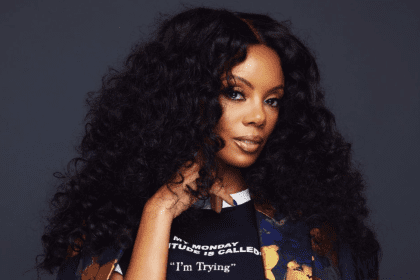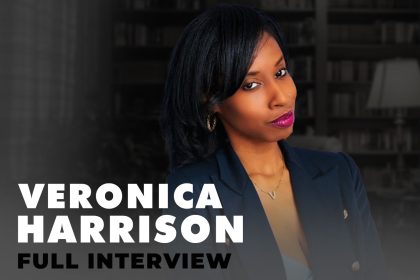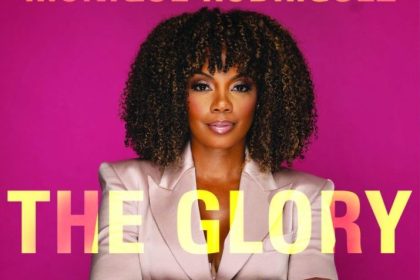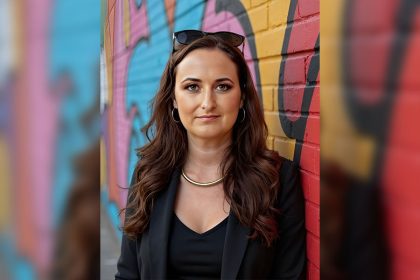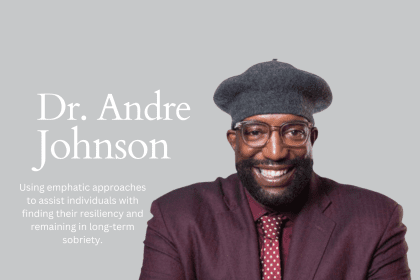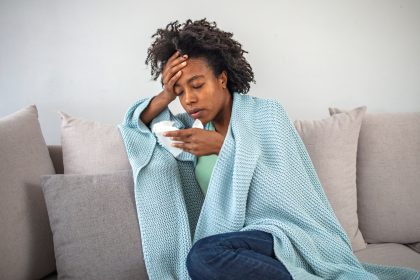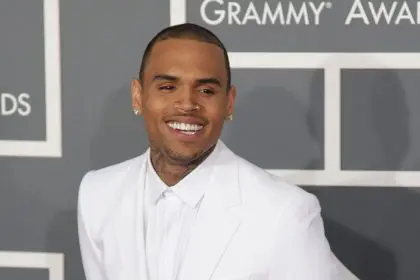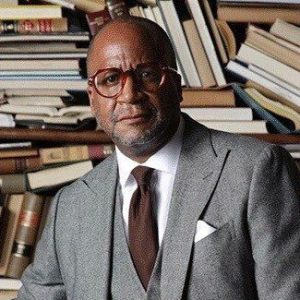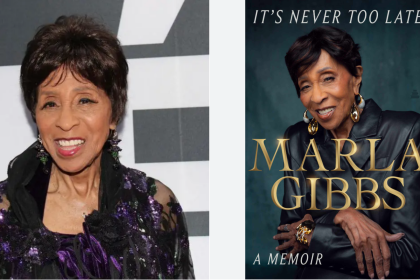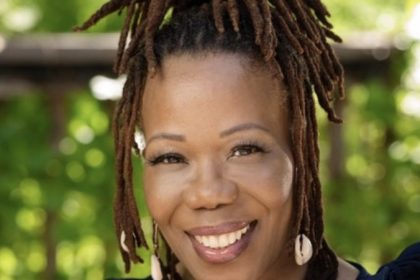In her groundbreaking debut book, award-winning journalist and social documentarian Paula Lehman-Ewing delves deep into the evolving landscape of civil rights activism. Through her years of experience covering the criminal justice beat, Lehman-Ewing gained unique insights into the systemic issues plaguing America’s justice system.
Her work has not only earned recognition from industry leaders but has also granted her unprecedented access to the inner workings of modern civil rights movements. In this intimate conversation with Munson Steed, Lehman-Ewing discusses her book “Reimagining the Revolution: Four Stories of Abolition, Autonomy and Forging New Paths Forward in Modern Civil Rights Movement,” offering a compelling look at how activists and organizations are approaching change through unconventional methods.
What inspired you to write this book and what’s its full title?
The full title of the book is “Reimagining the Revolution: Four Stories of Abolition, Autonomy and Forging New Paths Forward in Modern Civil Rights Movement.” It’s a mouthful, so I just call it RTR, which is Reimagining the Revolution.
I am a recovering journalist myself. I cover- I was a criminal justice beat reporter, and like a lot of people who kind of stare the system in the face, it got real hard to stay objective about the subject of mass incarceration and our current criminal legal system. So I got more involved, and in doing so, kind of asked a lot of the same questions as many people in grassroots movements, which is, we seem to be protesting the same for the same stuff.
And I got curious as to ways in which people were moving differently to exact change. And so I went about finding four examples and putting them, putting their voices in my book.
Can you walk us through the four examples you chose to highlight in your book?
Well, then, I’m going to start with Greenwood because it’s in Atlanta. So one of the chapters I profile Greenwood Bank, which is a Fintech company out of Atlanta. It’s founded by quite the cast of characters: Ryan Glover, who founded Bounce TV and is a serial entrepreneur, Killer Mike, as you know, who has an amazing solo career at this point but also is one part of Run the Jewels, and Ambassador Andrew Young, close confidant of Martin Luther King, Jr. and the first African American Ambassador to the UN.
It’s a controversial chapter, because Mike and Ambassador Young sort of believe that especially coming out of Atlanta, capitalism can work for minorities, especially if it’s employed with dignity and humanity, which kind of in my mind already defies what capitalism is.
But it’s a controversial chapter, because you know, right before it is a chapter with Angela Davis, who is insistent that capitalism will always lead to dehumanization, to human exploitation, etc. But you know, then again, you have Bobby Seale, Black Panther party saying, to develop political and economic power in a capitalist society, you need capital. And so I find that notion radical.
Greenwood is really interesting. It is a bank that is centered on improving and empowering black and Latino communities through capital. So it came out of this call for Bank Black, and the idea of raising capital to empower communities. Greenwood was a kind of this Black Wall Street is what they used to call it, until in Oklahoma, where everything was – the dollar circulated internally, like 20 times or something before it exited the community.
And so that’s what Greenwood’s trying to foster. The chapter before it, I mentioned Angela Davis. She has an organization that she founded around the same time around the same time as Rolling Out. Actually in 2000, there were a bunch of conferences to come up with ways to battle this massive prison boom, and she and Rose Byz and Ruth Wilson Gilmore created Critical Resistance, and Critical Resistance is focused very much on dismantling the prison industrial complex and transferring that power into communities.
I actually collaborated with Critical Resistance a lot. As I said, after I moved on from journalism, I created – I was hired to create a newspaper for All of Us or None which fights for the civil and human rights of formerly and currently incarcerated individuals, and through that work I did a lot of coalition work with Critical Resistance and people there. They’re also who I call the OG of the grassroots movements today. The fact that Angela has been fighting for so many years is pretty fantastic.
And then the bookends – those two chapters are in the middle. The bookend character chapters are both organizations founded by incarcerated activists, and I did that quite purposefully. I think that you know Glen Martin, who’s in the book, is formerly incarcerated activist, and he says this great saying that those who are closest to the problem are closest to the solution and farthest from the resources.
So if you’re looking at systems of oppression, the people who know it best are the people who are most under it, and in the day and age of mass incarceration I find those to be prisoners. The first prisoner is Ivan Kilgore, who founded United Black Family Scholarship Foundation. He’s still incarcerated.
He’s in his second decade of incarceration, and he’s created an organization that reimagines communities. Whereas he was hired to rebuild downtown Oakland, and what ended up being the gentrification of downtown Oakland, he put his heart and soul into this community. And then they said you probably can’t live here because you don’t have the money to live here anymore. And then he sort of had to resort back to the underground economy.
He’s reimagining a place where community redevelopment is done by people in the community who are given trade skills, a way to make an honest living and then feel invested in that community and keeping it safe.
The final chapter is Hashino Denham, who is incarcerated in Kern Valley State Prison, and he has created the Autonomous Infrastructure Mission which is a completely self-contained community, autonomous of the State. They have their own security system, their own education system, their own internal economy. And it’s being built out in Grand Rapids, Michigan, right now, and they have a number of other satellite communities.
I have a tendency to talk. It’s probably why I wrote a book.
Beyond political solutions, what understanding should readers gain from your book about addressing today’s challenges?
I would look at what we’re dealing with as social problems. And why would you look for a political solution to social problems? You would look for a social solution. You would look for people who are in the community who are boots on the ground and who will feel the impact of the changes being made. I worked for a politician, and it is a very, it’s a – an individual rise. You do something so that one person can move up the ladder.
You work with grassroots organizers, and they’re always looking to pull back from people in their community. In the formerly incarcerated community people who pull back to the people who are still incarcerated, and that sort of social solution is going to take you a lot farther. I would also say that, I had a lot of people with big feelings both ways about the election.
And in my opinion, you’ve got someone like I mentioned Angela Davis, who’s been fighting since the inception of the Black Panther party, and then you’ve got someone who’s going to come in for a maximum of 8 years. You’ve got the shelf life, I mean. It may seem like it’s going to – it makes, we sort of live in this idea where we’re reacting to the crisis of the day. But in reality social movements have a much longer momentum than any single politician.
How did you manage to get time with iconic figures like Angela Davis for this book?
I had the fortunate experience of being around Angela Davis through the work that I did with All of Us or None. Other people like Killer Mike. One of the things I think – I’m not sure if everyone’s watching on video, but I am a white woman, and so to have this conversation with people.
I needed to have a certain amount of credibility, and I did that by putting in the work myself, by doing a lot of research, that I could not have a conversation about, how to be an anti-racist, but have a conversation about black skin, white mask by Franz Fanon, and like, have the deeper understanding and know that I’m invested in it. I also, having been in the wild grassroots something to protest every second of the day world, I know how valuable time is, and so I really let people know that I value the time they were giving me.
I was able to get an interview with Killer Mike, and I was given 30 minutes, and so I watched probably 3 hours worth of Killer Mike interviews, and I averaged that in a 30 minute, in a 30 minute interview the man loves to talk, which is great because I love to hear him talk, but he – he would get to – people would get to ask him about 2 questions in a 30 minute interview. So I picked my top 2 questions, 2 things I needed from him specifically that only he could answer and asked him those questions. And so that’s sort of how I navigated that world.
What were those two questions you asked Killer Mike?
You gotta read the book. Mike is really interesting, especially paired with Ambassador Andrew Young, because Ambassador Andrew Young is he’s connected with Martin Luther King, and I think of that – Killer Mike is more of a Malcolm X guy. You can listen to his tracks. They intro his music. Malcolm intros his music. I wanted to know a couple of things – one I wanted to know from him, from his mouth, if Greenwood was a catalyst for change or if this was a – I guess – let’s go back.
I wanted to know from him – a lot of people have been asking, is this like the moment? Right cause we all had, the Tamir Rice Moment, or the Michael Brown Moment. Where, like this, is it like this? This has to be – this has to be the catalyst and so I wanted to know if Greenwood, which the town was destroyed. It was infiltrated by white rioters who burned the place down, and it was a massacre. It’s called the Tulsa Massacre. I wanted to know why in today’s day and age a Greenwood would work if it was because now’s the right time.
And he was very eloquent about his answer. He has this great African proverb that says, if you want to go somewhere, go alone. If you want to go somewhere fast, go alone. If you want to go far, go together.
It’s an African proverb, and that’s what he was sort of saying, is that right now people are coming together, and Greenwood is one of those – one of those places that are bringing people together and pushing forward as a group. So that was – that was a big question for me. The other question I asked him was, I wanted to know about his what radicalized him?
I knew about how he met Andrew Young as a young activist. I knew a lot of his, what his beliefs were from his, from his music and from his writings. There’s a fantastic GQ profile that went very in depth on his political views. But I wanted to know about his family, and where that came from, and he was able to tell me about his grandmother, who was in his family’s work with civil rights movements.
And he really put things in perspective. He has this quote that says, we’re not a century out of slavery, like they called it Jim Crow, and that sounds cute, but it was apartheid, and so he has a really strong way of putting things together. I think he’s a lyricist in both his profession and just when you talk to him.
Give us three reasons why people should read this book right now
One is that a lot of people come to the movement with big ideas and big energy, and all of that is fantastic. But a big part of the movement today is taking into account the history of the movement and the evolution of slavery over time and understanding that evolution and government infiltration and surveillance as a way of expanding control. You’re going to learn that from people who have been on this path a long time.
My boss told me when I first started working at All of Us or None – his name is Dorsey Nunn, and he said, this party started a lot longer, a lot way before you got here.
And so I would say that it’s important to read the book, because it’s important to have a really good understanding of the history of the lessons that have been learned and of where the movement is now, rather than just jumping in with your own ideas, and then end up competing with people who have been kind of strategically moving forward for a long time.
I think the second reason is that the people who I interview and got to talk to are amazing. They are just interesting people who are willing to have real conversations. And I try not to, especially since I am a white woman, I try not to be in the book. I sort of present myself as your eyes and ears, so I want you, the reader, to be having these conversations.
I want you to be talking with Killer Mike. I want you to be talking with Ivan Kilgore. I want you to meet these people because they’re so smart and so intelligent and so passionate about what they do. And the third reason would be that I’m not sure. In the title, I talk about abolition, and I think abolition is one of those buzzwords that, like you hashtag that has not a lot of real gravitas or understanding behind it.
I hope that I present abolition in a way that is, through a human lens, and therefore a lot easier to digest. That’s the kind of feedback I’m getting from readers when I go to events, and when I talk to people one on one is that it’s kind of a difficult subject to digest that’s made a lot easier because it’s told through the story of people.
What would you project about the future of incarceration in the United States, and how might the Black community still not understand its systematic impact?
Even with all the reforms I make the push for abolition, because abolition, meaning the eradication of current systems, including the prison system and I believe that reforms have just allowed that system to evolve.
So now you might not have overtly racist control mechanisms like fugitive slave laws or anything like that and Jim Crow laws, you don’t have something that’s maybe like overtly racist. But you do have something that looks like a reform. Something like electronic monitoring that is like, okay, great. Well, now, people won’t be in jail.
They’ll be out of electronic monitoring. The problem is that that extends the control and surveillance of prisons of the prison industrial complex into communities. Now, it’s not just about controlling people with bars. It’s about controlling people electronically. I think you also have this advent of technology that seems to be the solution to all problems. And I make the solution – I make this argument in the book.
Right now we’re living in a world where like tech can solve it. It’s like all the big tech Bros are in the White House right now. Tech can solve everything – problem is that when you have years and years of what I call dirty data, you’re going to have hotspot policing dictated by higher arrests and higher policing in minority neighborhoods.
Like that is going to only exacerbate, not only the disruptions of communities through criminalization and through policing, but it’s going to continue this constant conflict between the police and black communities. And that is not, we started this country be like for a large part because we didn’t like law enforcement.
British soldiers like in our towns telling us like pay taxes because we’re the – we’re the militia. And now we’ve got a pretty militarized police force in our communities. And so it’s still very much present. It’s still very much here, and it still very much needs to be changed for the betterment of not just minority communities. But I would say, all communities.
Where can readers find your book?
It’s Reimagining the Revolution. You can find me at reimaginingtherevolution.com, and @reimaginingtherevolution on Instagram

